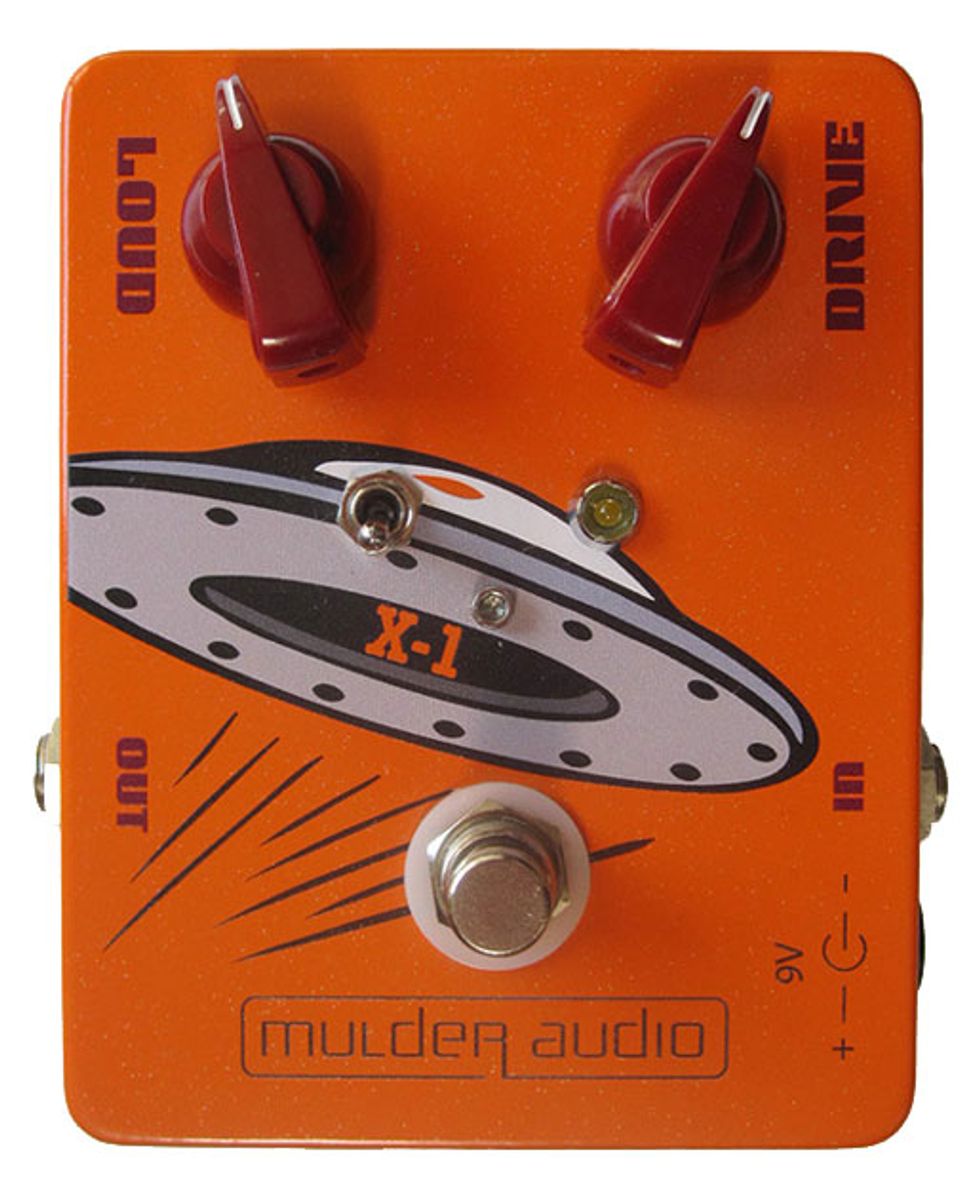Until recently, Colorado-based Mulder Audio exclusively made audiophile cables and wiring. A funny place from which to jump into overdrive stompboxes, you say? Perhaps not. The principles of amplification are pretty much the same whether it’s a stereo, guitar amp, or overdrive. And a stereo audiophile probably knows a few things about reducing noise that the average guitar goon can’t fathom.
Mulder Audio’s foray into overdrive, the X-1, has the beautifully made look of a pedal built to audiophile standards. Better still, is dishes heaps of dirty vintage-flavored goodness with a versatility that belies its streamlined design.
Unidentified Clipping Objects
The X-1 eschews ICs and op amps in favor of a simple single-silicon-transistor circuit. Much of its varied personality can be chalked up a set of germanium and silicon clipping diodes, which can be selected or combined via the pedal’s 3-way toggle. Different diode choices offer distinct breakup textures and shift the pedal’s bass response.
The X-1’s innards reveal a hand-wired circuit made with Mulder’s own high-fidelity wire and large-format capacitors. The unit has no circuit board—components are linked via a length of terminal strip.
Ratings
Pros:
Versatile. Excellent tone. Touch sensitive.
Cons:
May be too vintage-sounding for some. Pricy.
Tones:
Ease of Use:
Build/Design:
Value:
Street:
$260
Mulder Audio X-1
mulderaudio.com
Overdrive Options Abound
The X-1’s control layout is stupidly simple. But between the changes in distortion texture yielded from its selectable diodes, the considerable gain on tap, and the impressively musical way the X-1 responds to guitar volume adjustments, the X-1 can cover everything from warm, clean boost to growling, hairy near-fuzz.
With the pedal’s volume and drive knobs maxed and the silicon diodes selected, the X-1 and an amp at the verge of breakup deliver the compressed sound and feel of a dimed low-power tube amp. (Imagine the chewy, harmonically dense fuzz of Deguello-era ZZ Top.) The compression is especially nice in the bass frequencies and doesn’t compromise low-end focus. And while it lacks EQ controls, the X-1 blended well with every amp and guitar combination I tried, thanks to its glowing transparency.
The X-1’s harmonic liveliness makes it ideal for overcoming backline challenges. At a walk-on gig, the X-1 and my Les Paul Jr. were enough to transform the provided Electro-Harmonix 44 Magnum power amp and no-name 1x12 cabinet from a sterile, lifeless canvas into a fire-breathing rig that kept up surprisingly well with the high–ticket boutique tube amps elsewhere onstage. When mated with an early-’70s 100 watt Marshall Super Lead, the X-1 added extra sparkle and grunt to the already burly Marshall, especially on the extremely satisfying setting that combines the relatively soft clipping of the germanium diodes and the harder-clipping silicon set.
The Verdict The X-1 Overdrive delivers that coveted trifecta of overdrive traits: touch sensitivity, harmonic richness, and a wide gain range, from near-clean to filthy. The $260 price may be too rich for some, but for players who crave overdrive variety and must contend with varying backlines, its many voices make it a valuable tool.







![Rig Rundown: Russian Circles’ Mike Sullivan [2025]](https://www.premierguitar.com/media-library/youtube.jpg?id=62303631&width=1245&height=700&quality=70&coordinates=0%2C0%2C0%2C0)


























